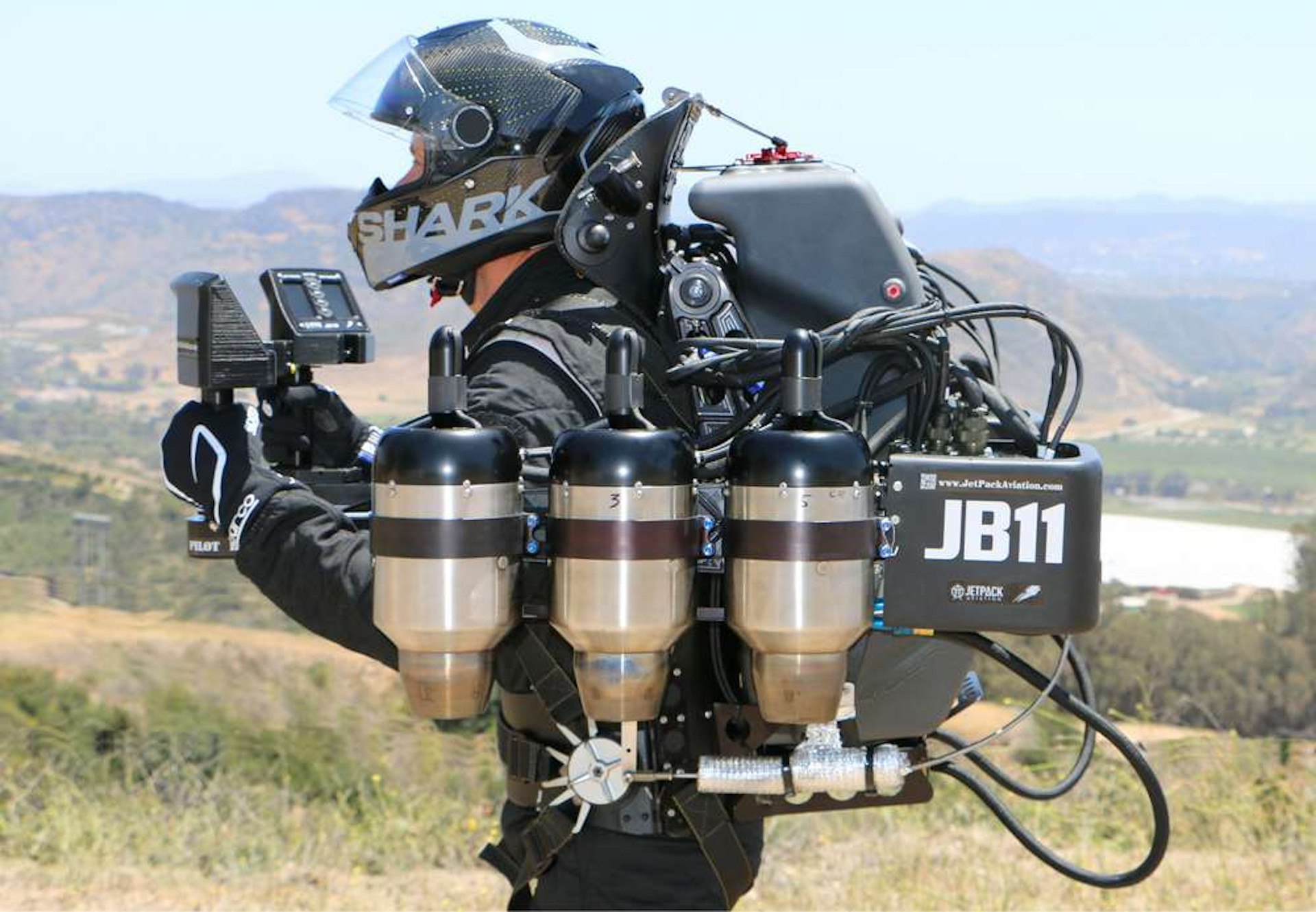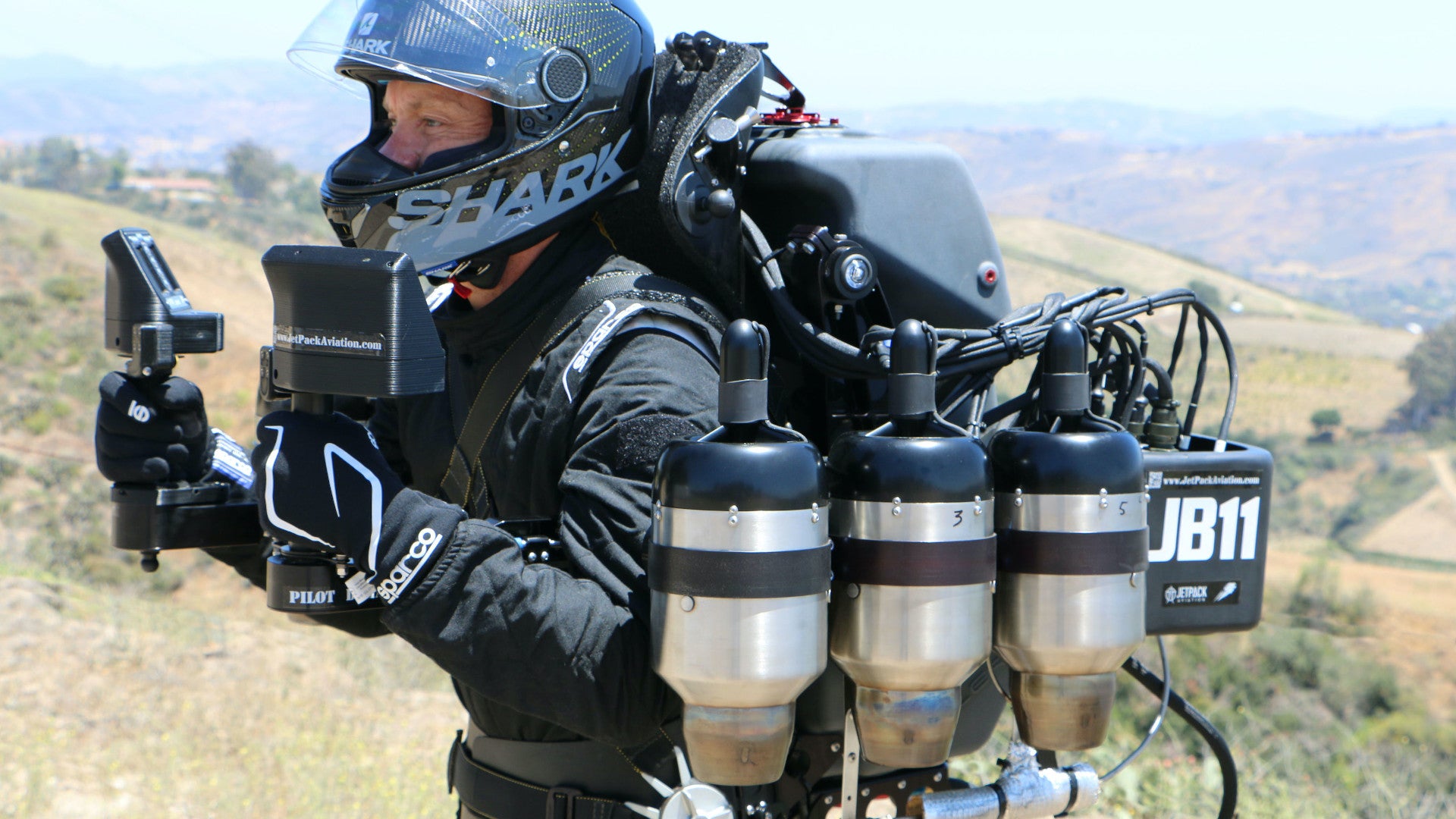JetPack Aviation says it secured the first sale of its JB12 jetpack, to an unspecified Southeast Asian military. The company says that it expects to have fulfilled the order, which is for two JB12s at a cost of approximately $800,000, within the next six months.
The JB12 is the latest in a line of personal jetpacks available from the California-based firm. JackPack Aviation has not released any pictures or video footage of this particular model, which is described as a “classified” design derived from the earlier JB11 that is specifically intended for military use.

The company does say that the JB12 weighs approximately 105 pounds, though it’s unclear if this is an empty weight or with a full load of fuel, either kerosene or diesel. It is powered by six turbojet engines is capable of hitting a speed of around 120 miles per hour. For comparison, the JB11 has an empty weight of 115 pounds and has a maximum speed of over 120 miles per hour, according to JetPack Aviation’s website.
The person wearing the JB12 operates the jetpack using a computer-controlled flight system. Among other things, it “can detect an unexpected decrease in thrust from any engine and automatically balance thrust on the opposing engine,” according to an article last year from Vertical magazine.

“The ratification of this deal demonstrates that the JB12 JetPack provides defense forces with exceptional aerial capabilities to fulfill a wide array of mission requirements. The maneuverability of the JetPack, its small form factor, which fits inside a set of standard Pelican cases, and ease of integration with our Speeder platform to complement the JB12’s capabilities, were all factors that informed the sale,” JetPack Aviation Founder and CEO David Mayman said in the press release. “This order represents a significant step forward for us as it confirms that our development program is meeting military needs.”
Though JetPack Aviation was only founded in 2016, Mayman’s work on developing jet packs goes back to the 1990s. He and others have conducted a number of public demonstrations of earlier models over the years, including a promotional flight around the Statue of Liberty in 2015 using a JB9.


Though we don’t know the customer or how they intend to use their JB12s, jetpacks have historically been presented as potentially valuable tools for a host of military missions. At their core, jetpacks, as well as other similar personal mobility systems, such as rocket belts and individual flying platforms, offer a way for even small units to rapidly move from one location to another.
In principle, the capabilities jetpacks offer could be potentially useful for limited applications. This could including helping troops quickly reposition in response to changes on the battlefield or rush to the aid of other friendly forces or offering novel ways to quickly conduct boarding operations at sea or execute special operations forces raids. They might have applications in disaster relief and other humanitarian assistance situations, as well, especially given their ability to help personnel get quickly into confined areas that might otherwise be inaccessible.
The JB12, however, is hardly the first jetpack design that a military has acquired or otherwise experimented with. The U.S. military, in particular, has looked into jets, rocket belts, flying platforms, and other similar systems on multiple occasions since the 1960s.
The videos below show just some of the rocket belts and other concepts for quickly moving individual troops around the battlefield that the U.S. Army explored in the 1960s.



In fact, while this new deal is JetPack Aviation’s first actual sale of the JB12, the company did previously secure a Cooperative Research and Development Agreement (CRADA) from the U.S. Navy to work on this design in collaboration with an unspecified U.S. Navy SEAL team on the West Coast. A CRADA is a mechanism available to the U.S. military that allows for collaboration with private companies, research institutions, and other entities, without the need for a standard contract. They often do not even involve any money changing hands, with the deals being more about a sharing of testing capacity and other resources.
In August, the U.S. Air Force’s AFWERX technology incubator also selected JetPack Aviation’s Speeder as one of 35 proposals that it will now explore as part of a high-speed vertical take-off and landing (HSVTOL) research and development “challenge,” which you can read more about here. The Speeder is a VTOL-capable vehicle concept that leverages the company’s experience with the JB11, and is intended to either be operated by a single individual or in an unmanned configuration. The Southeast Asian military that has now bought the pair of JB12s has also expressed an interest in the Speeder for various potential missions, “including exfil/infil [exfiltration/infiltration], fire fighting, medical evacuation, cargo deployment into active theatres,” and more, a company spokesperson told The War Zone.

Historically, performance and endurance limitations, together with high unit costs, have prevented jet packs from transitioning from more of a novelty into an actual operational military capability. While we don’t know all of the JB12’s specifications, JetPack Aviation says that the JB11 on which it is based has an endurance of around only 10 minutes, which is also “dependent on pilot weight and density altitude.” In a military context, the operator’s total weight would include various weapons and other equipment, even on short-duration missions.
At a maximum speed of 120 miles per hour, 10 minutes of endurance would still only give the jetpack a range of around 20 miles, or a combat radius of some 10 miles to and from a launch point. It would certainly be possible to execute one-way, 20-mile flights under certain circumstances, but this would mean the operator could be expected to abandon the system, with its unit cost in the hundreds of thousands of dollars, at least for a period of time or have to refuel it in the field somehow.
There will also be the need for at least some level of special training for any personnel expected to operate these jetpacks. JetPack Aviation has said in the past that it can train people to fly its jetpacks at a basic level in as little as 10 days, but it’s unclear how long the company might feel it would be necessary to train operators to use them on any kind of military missions.

All this being said, JetPack Aviation clearly believes that the JB12 offers a path toward turning jetpacks into a viable military capability and at least one military in Southeast Asia has agreed that it is a technology worth pursuing. Hopefully, now that this sale has been announced, will begin to learn more about how the company’s first military customer plans to put its pair of jetpacks to use.
Contact the author: joe@thedrive.com
